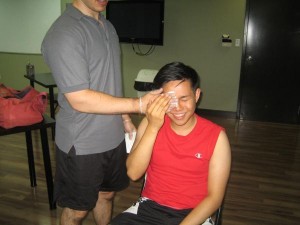Allergic conjunctivitis is a common condition that arises if the eyes are exposed to substances such as mold or pollen. The condition involves inflammation due to an allergic response that results to reddened, watery and itchy eyes.
What are the types?
- Acute – this is a brief condition that is common during the allergy season. The eyelids abruptly itch, swell and burn along with a watery nose.
- Chronic – this is an uncommon form that can occur all year. It is mild response to allergens such as dust or animal dander. The usual symptoms come and go but include itchiness, burning sensation and light sensitivity.
What are the signs?

Allergic conjunctivitis is defined by reddened, itchy, watery and burning eyes. In most cases, the individual wakes up in the morning with puffed eyes.
Management of allergic conjunctivitis
There are various treatment options for allergic conjunctivitis.
Home remedies
The treatment at home includes a combination of activities to alleviate the symptoms and preventive care. Exposure to potential allergens can be reduced by the following:
- Keeping the house free from dust
- Close doors and windows if the pollen count is high
- Utilize an indoor air purifier
- Avoid exposure to dyes, harsh chemicals and perfumes
The symptoms can be eased by avoiding rubbing the eyes. Place a cool compress on the eyes to lessen the itchiness and inflammation.
Medications
In serious cases of pink eye, the doctor might suggest the following:
- Oral or over-the-counter antihistamine to reduce or block the release of histamine
- Anti-inflammatory drugs or eye drops
- Steroid eye drops
- Eye drops that shrink any congested blood vessels
What is the outlook?
With correct care, relief can be achieved or at least lessen the symptoms. On the other hand, recurrent exposure to the allergens can trigger symptoms in the future.
